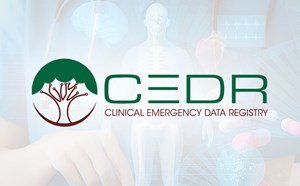
Interview With John Manning
What is your background / education?
My father was a self-employed ‘designer engineer,’ which means we had a full professional machine shop in our backyard. Growing up, I helped make sonar parts for the navy and built robots for the US First Robotics competition. In college, I was an in-house computer technician...where I learned the fine art of ‘Google searching’ to help others find answers to their problems over the phone. This was true for those with little technical experience (potential customers) and those with high tech backgrounds (in the years preceding our now ubiquitous smartphones). Try working with someone who has poor computer literacy to figure out what version of Windows they have (98, ME, 2k, XP)...just to find the right sequence of steps to troubleshoot...purely over the phone!
I graduated from American University with two degrees (Biology, Biochemistry) and two minors (Applied Physics, German Language). I went to medical school at New York Medical College, residency at Carilion Clinic / Virginia Tech Carilion, and Clinical Informatics fellowship at the University of Illinois at Chicago.
How did you get interested in informatics?
At ACEP’s Scientific Assembly in 2011, I was informed of a new subspecialty called ‘Clinical Informatics’ that was approved by ABMS one month prior. Four months later, I went to the NIH for a medical informatics elective under Jim Cimino. This is where I learned about the concepts of usability and the excellent works from Ben Shneiderman and his group at the University of Maryland’s Human-Computer Interaction Lab.
Jeff Nielsen has also been an excellent mentor for me within ACEP’s SEMI as well as in other CI-related endeavors. Finally, I am thankful to have drawn inspiration from many mentors and role models across different clinical specialties over the years to foster and expand my interest in CI. That's a wonderful strength of CI: you can learn from and collaborate with many others regardless of their primary specialty.
What are the skills you think every clinical informatician should have?
Many of your skills should be tailored to match your intended area(s) of CI practice. Knowledge vs Operations vs Innovation based on Clinical vs Industry vs Policy. You should also be willing to lean into your personal strengths, be they around change management, optimizing data warehouse queries, or creating new and unique IP. We covered these in the KOI Pond article we wrote.1
Skills seen across all informaticians include a passion (or at least willingness) to build insights from clinical data and an understanding of the change management principles that are critical to the successful execution of an informatics project. Perhaps most important is the ability and willingness to adapt and change. I think a lot of people who use the term 'innovation' too broadly actually mean 'adaptation.' Those in CI tend to adapt very well.
What is your role in Charlotte, NC?
My title at Atrium Health is ‘Assistant Professor and Director of Clinical Informatics’ within Atrium Health’s Carolinas Medical Center, Department of EM. This role breaks down to 75% clinical / 25% non-clinical FTEs. This is atypical for informatics practice as a whole, but more common for those who are based out of their primary specialty's department.
I am also CEO of MayJuun, which is a startup that creates healthcare apps in Flutter and has a strong focus on usability and end-user designs.
What is Flutter?
Flutter is Google’s open-source software development kit (SDK) that allows you to code for multiple applications such as Android, iOS, desktop, and the web using a single code base. It uses the Dart programming language.
What is FHIR - FLI?
FHIR ® stands for Fast Healthcare Interoperability Resources, which is the global standard for transferring health care data securely, and interoperably. It was first drafted by HL7 International in 2011. They host global ‘Connectathons’ several times a year and have an annual FHIR DevDays, to which I'll be speaking on the 'Doctor Track' this June (2021).
FHIR-FLI is the global collaborative that links healthcare data in FHIR to cross-platform apps in Flutter. One of our FHIR-FLI apps uses PRAPARE (Protocol for Responding to and Assessing Patients’ Assets, Risks, and Experiences). PRAPARE © is a national effort led by the National Association of Community Health Centers ® that allows for the collection of patients' Social Determinants of Health data. Our efforts take the 21-question PRAPARE survey as a FHIR questionnaire, displays each question dynamically in a cross-platform app, and then exports the responses securely and interoperably as a FHIR resource. Content in our app is available in 26 languages.
How do you balance your time between non-academic and academic responsibilities?
I’ve been involved in multiple areas from national leadership to developer. I co-founded MayJuun in the time spent between graduating fellowship and joining my academic path. I've been tracking my time habitually (almost to the minute) since May 2018, which has helped me keep as much balance as best I can amongst all priorities, including life, family, etc. Its made for an interesting personalized dashboard to say the least. The balance is important no matter how you look at it. That said, getting the entire balance just right is a constant challenge that continues to evolve.
On the topic of visual dashboards, I also teach others how to connect our data warehouse to Power BI using multiple data sources. I’ve used this to create complex, relational models, which can be a very powerful means to help ‘unlock’ the data for our providers and peers. At FHIR DevDays, we will discuss lessons learned from these dashboards, FHIR-FLI works, and EHR access log queries during the plenary sessions.
Are there any IP concerns/hurdles while having a business and being affiliated with academia?
It depends on your organization’s policies around IP, which I was very intentional about clarifying when considering job opportunities. I’ve been very careful about where and when I utilize my time, striving meticulously to keep each endeavor separate.
What would you like to see 5 years from now?
If possible, I'd like to see a CI fellowship program at my own institution. The opportunities available for fellows to learn across the Knowledge, Operations, and Innovation paradigm are quite substantial here, and I think trainees could benefit from that. I’d also like to see a greater focus on Human Factors initiatives, as I believe that has a strong potential for us to improve on the usability concerns that add up over time and contribute to burnout.
On a broader scale, I'd like to see an easier path for physician informaticians to expand their work force more diffusely across the US. We are a specialty without RVUs, and it can be a challenge to define our ROI to others who are just learning about the concept of informatics. Because of this, it can be particularly challenging for an informatician to find meaningful work at a health system without an established informatics department. If we really want to see the Learning Health System come to life,2 we need to embrace the informatics workforce more broadly across health systems in the US.3 Desai's recent article shows we still have a long way to go.4
Finally, I'd like to see a cleaner path for the innovative informatician, whose goal is to create new IP and workflows that aren't ready for wide scale adoption…but whose works may have broad impact when they finally scale. The CI fellowship path trains a broad swath of leaders, including academics, CMIOs/CCIOs, and true innovators. We should openly embrace and support all walks of informatics practice. This is our specialty to shape, and I'd love to see others similarly empowered to usher on a new generation of healthcare transformation.
John Manning, MD, FAMIA, FACEP
Assistant Professor, Atrium Health
CEO, MayJuun
References
- Manning JD, Wang M, Sarabu C, Goonan K. KOI Pond: The “Elevator Pitch” that Adapts to Describe the Breadth and Variety of Clinical Informatics Practice. ACI. Published online 2020. https://www.thieme-connect.com/products/ejournals/html/10.1055/s-0039-1701021
- Kohn MS, Topaloglu U, Kirkendall ES, Dharod A, Wells BJ, Gurcan M. Creating learning health systems and the emerging role of biomedical informatics. Learn Health Syst. Published online March 11, 2021. doi:10.1002/lrh2.10259
- Embi PJ, Richesson R, Tenenbaum J, et al. Reimagining the research-practice relationship: policy recommendations for informatics-enabled evidence-generation across the US health system. JAMIA Open. 2019;2(1):2-9. doi:10.1093/jamiaopen/ooy056
- Desai S, Mostaghimi A, Nambudiri VE. Clinical informatics subspecialists: characterizing a novel evolving workforce. J Am Med Inform Assoc. Published online September 20, 2020. doi:10.1093/jamia/ocaa173



